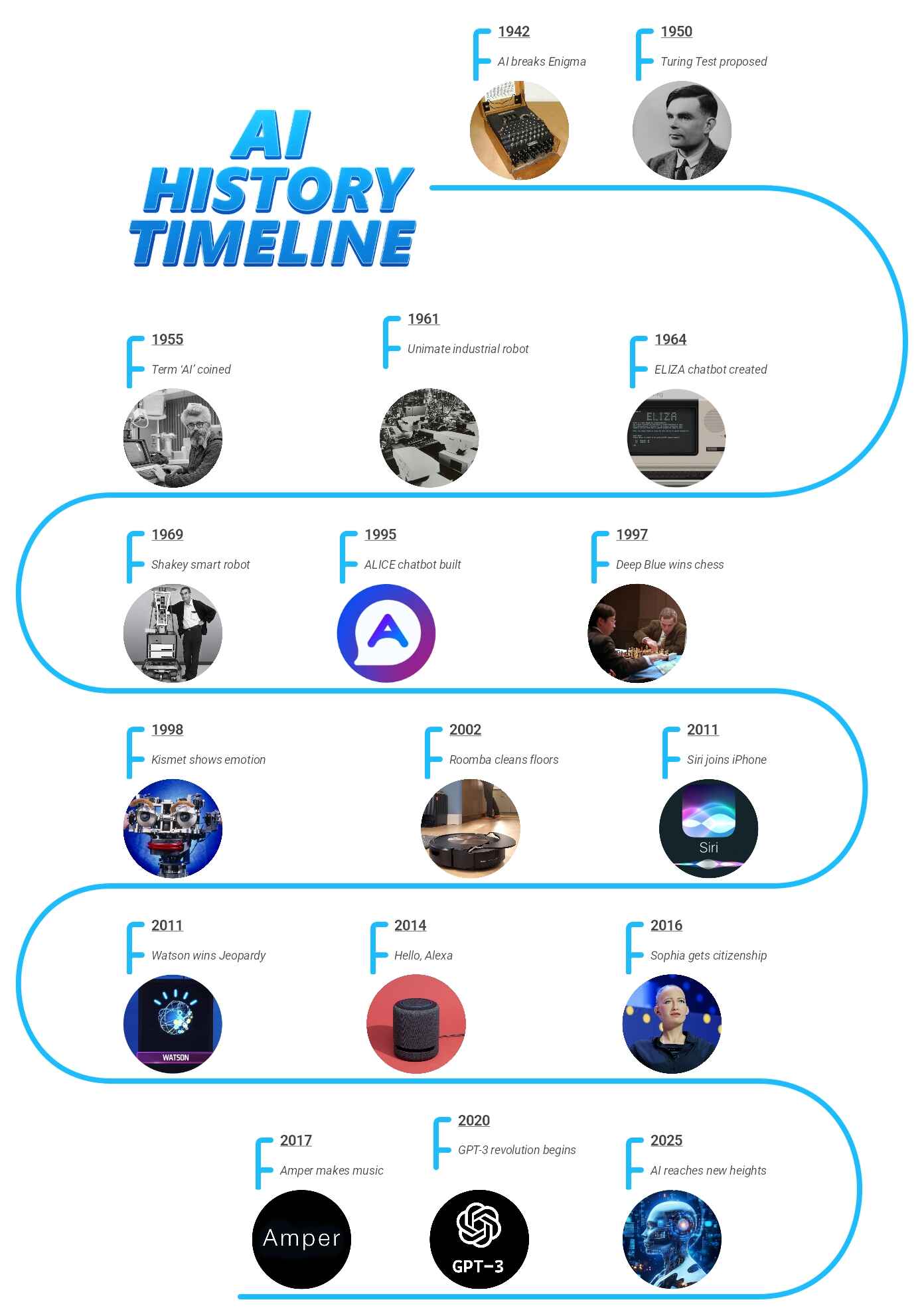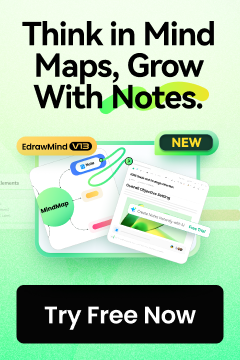Artificial Intelligence. Today, it powers your smartwatches. Chats with you on Siri, recommends your next binge on Netflix, and even helps keep your home in order.
But AI didn’t just show up one day. Its journey began back in the 1940s - years before the term “Artificial Intelligence” was even coined by John McCarthy in 1956. From mysterious code-breaking machines to early computer programs, the groundwork for today’s smart tech was being laid.
AI is everywhere. According to a New Vantage Partners survey, 92% of businesses say AI has improved their operations and delivered solid ROI. Beyond the boardroom, it’s deeply woven into our everyday lives; from voice assistants and chatbots to messaging platforms and home systems.
So how did we get here? Let’s rewind and explore the key milestones that shaped AI, from the 1940s to the 2020s.
In this article
Artificial Intelligence History Timeline
You’ve talked to Siri. You’ve seen Netflix suggestions. You’ve probably even argued with a chatbot. But where did it all start? AI wasn’t born in an app - it began way back in the 1940s, with curious minds and clunky machines.
Over the decades, it has evolved fast. Now, it writes, talks, paints, and even thinks (kind of). This timeline walks you through AI’s fascinating journey from humble beginnings to the smart tech you use every day.
1. Breaking Enigma with AI (1942)
It all started back in time of World War II. Allied forces were desperate to crack German military codes. Enter Alan Turing. He built a machine called the Bombe, which helped decrypt messages from the German Enigma machine.
The Bombe didn’t look like your modern laptop - but it was brilliant. It didn’t "think" like today's AI, but it laid the groundwork. Turing’s machine could scan through thousands of possible code combinations in a flash. It saved countless lives and proved one key thing: machines can solve problems faster than humans - if built right.
2. Test for machine intelligence by Alan Turing (1950)
A few years later, Turing wasn’t done yet. He posed a question that still fuels debates today: "Can machines think?" And to answer it, he came up with a clever experiment - The Turing Test.
It was like chatting with someone behind a screen. You don’t know if it’s a human or a machine. If you can't tell the difference, the machine has passed the test. Pretty cool, right? Turing basically gave us the blueprint for evaluating artificial intelligence before the term even existed.
3. The Father of AI - John McCarthy (1955)
In 1955, John McCarthy proposed the term 'Artificial Intelligence,' which was officially introduced in 1956 at the Dartmouth Conference.
He believed machines could one day think, learn, and solve problems like humans. It was a bold idea back then. He wasn’t just dreaming - he was building. In 1958, McCarthy also created LISP, a programming language still used in AI today.
He was the one who hosted the first AI conference at Dartmouth, where pioneers gathered to bring this wild concept to life.
4. The First Industrial Robot - Unimate (1961)
Robots weren't just science fiction anymore. In 1961, Unimate became the world’s first industrial robot. It worked at a General Motors factory, moving hot metal parts and doing risky tasks that were dangerous for humans.
It wasn’t pretty; it was a bulky arm that weighed over 4,000 pounds. But it was a game-changer. After Unimate’s success, more factories began using robots to handle dangerous or repetitive work.
5. The First Chatbot - ELIZA (1964)
Now, let’s talk about robots that talk back. In 1964, ELIZA was born at MIT. Created by Joseph Weizenbaum, ELIZA was designed to simulate a conversation with a therapist. She wasn’t exactly deep, but she was clever.
You’d type in something like “I feel sad,” and ELIZA might respond with, “Why do you feel sad?” It was all scripted, but people were fascinated. They started to feel understood by a machine! That emotional connection with AI? It started right here.
6. Shakey - The First Smart Robot (1969)
Next came a robot with a little brain of its own. Shakey was different. Built in 1969, he could actually make decisions. He looked around, figured out where he was, made plans, and even adjusted them if something went wrong.
He didn’t just follow instructions - he thought through his actions, which was unheard of back then. Shakey was the first robot that could "see," "think," and "move" all by itself. Basically, he was the great-grandfather of smart robots and autonomous vehicles.
7. ALICE - the Chatbot (1995)
By the ‘90s, chatbots had gotten smarter. ALICE, created by Richard Wallace, took things up a notch. Unlike ELIZA, she used natural language processing to hold more human-like conversations.
She could respond to a wide range of questions and even had a bit of sass. ALICE won multiple awards and inspired the movie Her, where a man falls in love with an AI assistant. Yep, chatbots were officially getting personal.
8. Man vs Machine - DeepBlue beats chess legend (1997).
1997 gave us one of AI’s most iconic moments. IBM’s Deep Blue, a chess-playing supercomputer, went head-to-head with world champion Garry Kasparov - and won. It was a dramatic battle of man vs. machine.
People around the world were stunned. A machine beating a grandmaster? That was once unthinkable. It sparked serious discussions: What else could AI outsmart us at?
9. Kismet - The Robot with Feelings (1998)
AI wasn’t just getting smarter - it was learning emotions. Meet Kismet, a robot developed at MIT that could mimic human facial expressions and emotional responses. It had moving eyes, eyebrows, and even a mouth to show surprise, happiness, or frustration.
Kismet wasn’t just about logic; it was about emotionally connecting with people. It paved the way for emotionally intelligent AI, like the ones in customer support and caregiving robots today.
10. Roomba - The Vacuum Cleaning Robot (2002)
Let’s take a break from deep philosophy for a second… and talk about cleaning. In 2002, Roomba arrived—a little round robot that could vacuum your home by itself. It had sensors to avoid walls, fall off stairs, and navigate your living room like a pro.
Not only was it practical, but it also felt like having a mini robot butler. And let’s be honest, it made people fall in love with AI for everyday life.
11. Siri and Voice Recognition on the iPhone (2011)
In 2011, millions met Siri, Apple’s brand-new voice assistant. You could ask her about the weather, set reminders, or even joke around with questions like, “Do you love me?” And yep - she’d answer. Sort of.
Siri wasn’t the first voice assistant ever, but she was the first mainstream AI you could talk to. Apple integrated her into the iPhone 4S, and suddenly, talking to your phone became normal.
She changed how we thought about interacting with tech. Honestly, it felt like having a little AI buddy in your pocket.
12. IBM Watson - The Q&A Genius (2011)
Ever heard of the computer that beat humans at Jeopardy!? That was Watson, built by IBM. It wasn’t just a party trick. Basically, it was designed to understand and answer real questions in natural, human language.
In 2011, Watson went head-to-head with Jeopardy! legends Brad Rutter and Ken Jennings. And surprisingly, Watson won, taking home the $1 million prize.
But Watson didn’t stop there. Over time, it evolved from quiz champ to AI powerhouse. Today, Watson can see, hear, read, talk, interpret, and even help make business decisions. Not bad for a former game show contestant, right?
13. Alexa - Your Voice-Activated Buddy (2014)
Next in the AI timeline is Alexa. Amexa is an Amazon virtual assistant. You say “Alexa,” and it lights up, even in a noisy room. It can play music, give you news or weather updates, control smart devices, and even help you order from Amazon.
It’s on everything now; smartwatches, speakers, TVs, even in cars. Yep, Alexa’s everywhere.
14. Sophia - The Robot Citizen (2016)
Sophia is the AI-powered humanoid robot by Hanson Robotics. She can mimic facial expressions, hold conversations, and even share her thoughts on pre-set topics. And she keeps learning with time.
Sophia made headlines in 2016 when she became the first robot to be granted citizenship by Saudi Arabia. She was also named the UNDP’s first Innovation Champion.
Her look was inspired by Audrey Hepburn, Queen Nefertiti, and the wife of her creator.
15. Amper - The AI Music Composer (2017)
Amper was the first AI to write, produce, and release music. It helps musicians by creating original tracks using AI and music theory. In fact, Amper teamed up with singer Taryn Southern for a groundbreaking album called I AM AI. The song “Break Free” marked their first human-AI collaboration.
Amper is a real game-changer in music.
16. The Game-Changer for Conversations: GPT-3 (2020)
In 2020, OpenAI launched GPT-3, and it changed everything. This wasn’t your average chatbot upgrade. GPT-3 could write essays, answer questions, translate languages, and even code. All from just a few words. It felt like the first time AI truly understood us.
Short for Generative Pre-trained Transformer 3, it was trained on massive amounts of internet text. It didn’t just mimic—it responded with context. Suddenly, talking to AI felt natural. From emails to stories, GPT-3 kicked off a whole new wave of AI-powered creativity.
17. Where AI Stands Today (2025)
AI isn’t just behind the scenes anymore. It’s front and center: writing emails, designing graphics, coding apps, and helping doctors catch diseases early. From smart cars to search engines, it’s everywhere. Tools like ChatGPT, DALL·E, and Midjourney make it easy to turn simple prompts into full-blown ideas.
In 2025, AI isn’t just a tool—it’s a teammate. It helps us think faster, create smarter, and do more with less. Whether you're a student, artist, or business owner, AI is now your co-pilot. It is always there, guiding, generating, and learning with you every step of the way.
How to Make the AI History Timeline in EdrawMind?
Speaking of AI, EdrawMind offers a variety of AI functions, including diagram generation, translation, and copywriting. Making a timeline from scratch is also quite simple with EdrawMind. It provides built-in customizable templates that you can modify and save as your projects.
So, here’s how to make the AI history timeline in EdrawMind:
Step 1: Getting Started
- Download, install, and start EdrawMind.
- Or, visit EdrawMind online
- Log in with a social account or create a new Wondershare account for free.
- Click the New Mindmap button on the homescreen to get started.
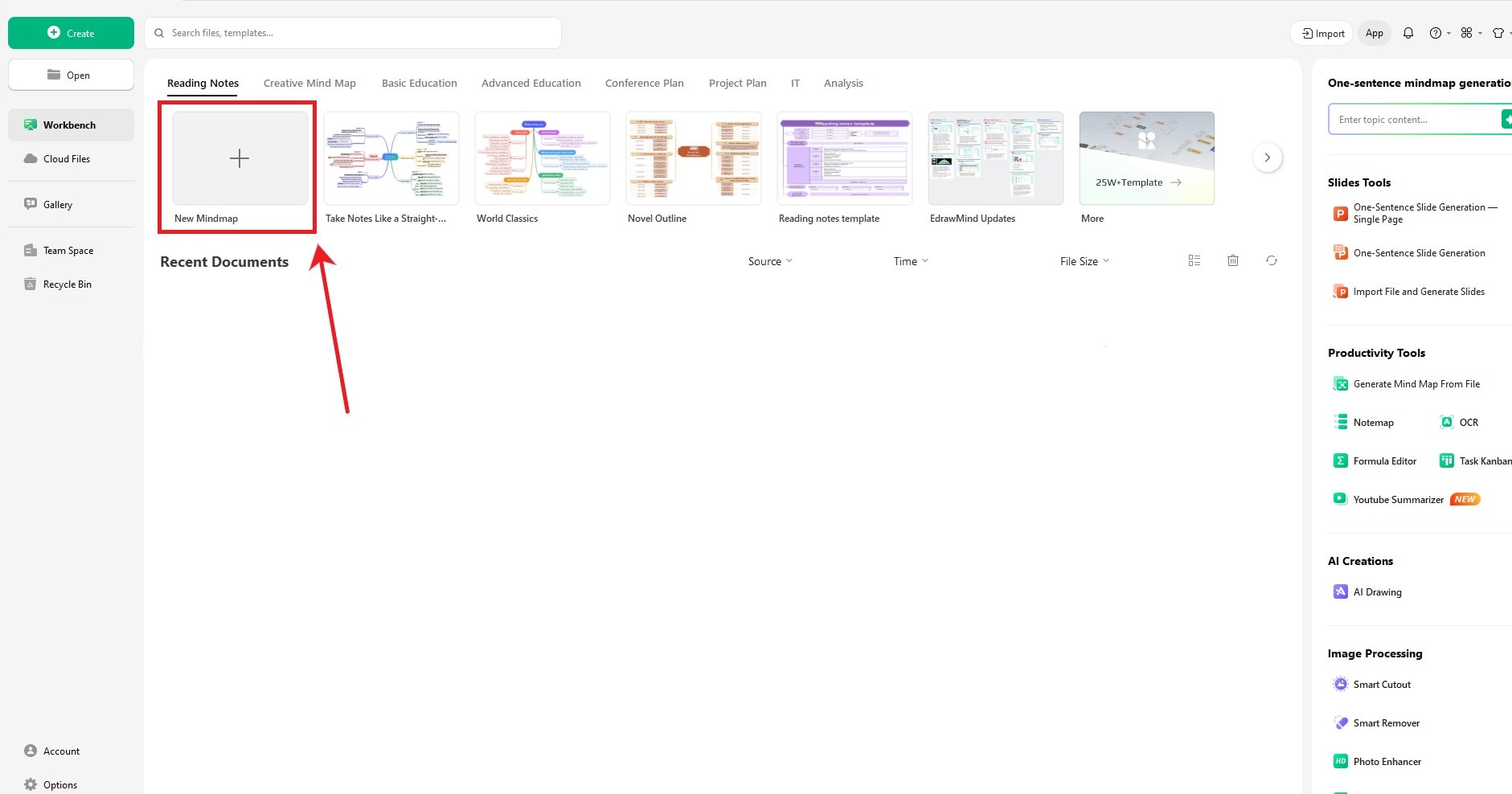
Step 2: Change the Layout
- Click the Main Idea and select Layout from the floating menu.
- Pick the Timeline (S-shape) from the list.
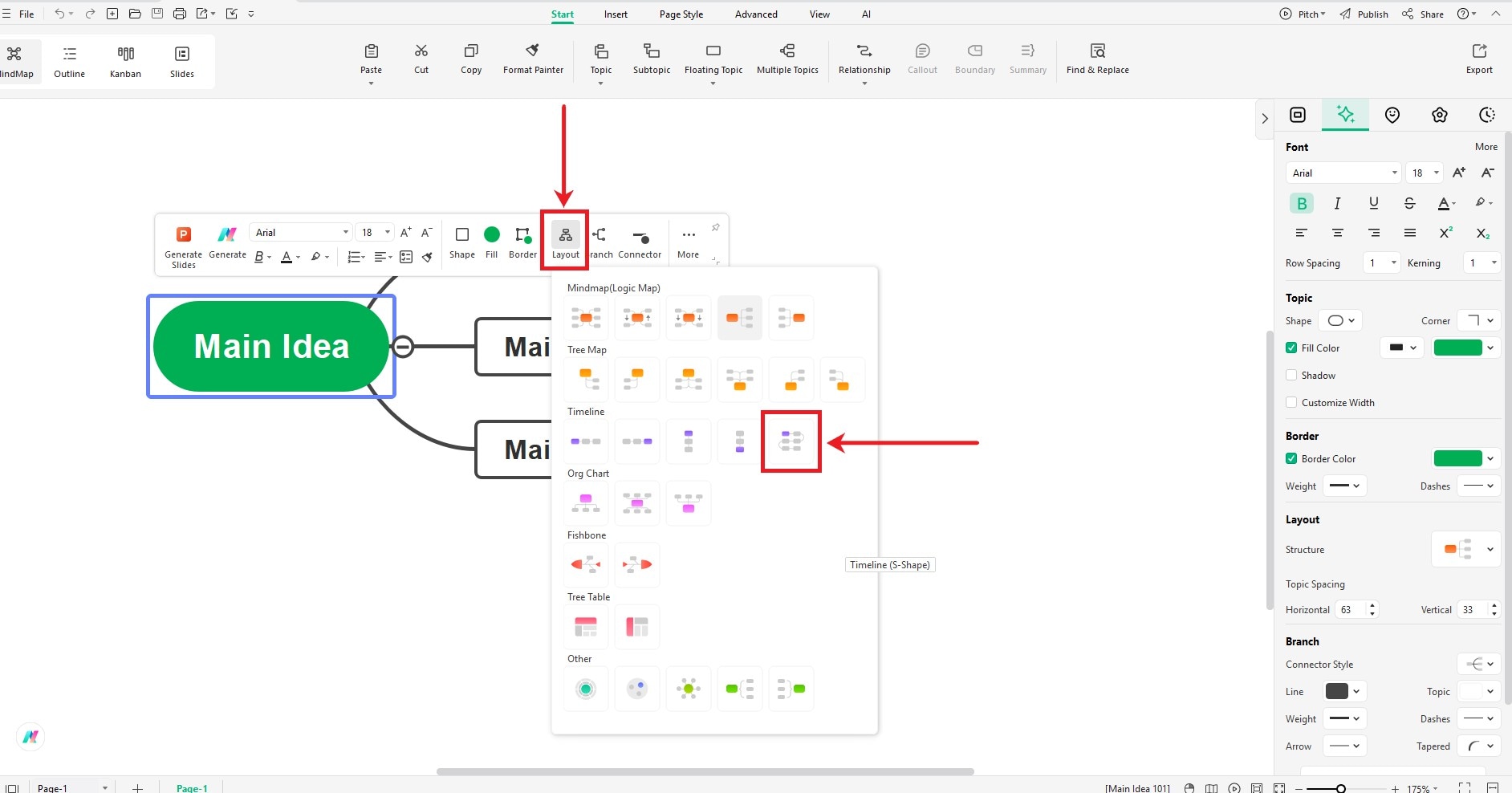
Step 3: Insert New Topics
- Select the Main Idea and click Topic from the top menu bar.
- Select Floating Topic from the top menu bar.
- Place it anywhere by clicking on the canvas.
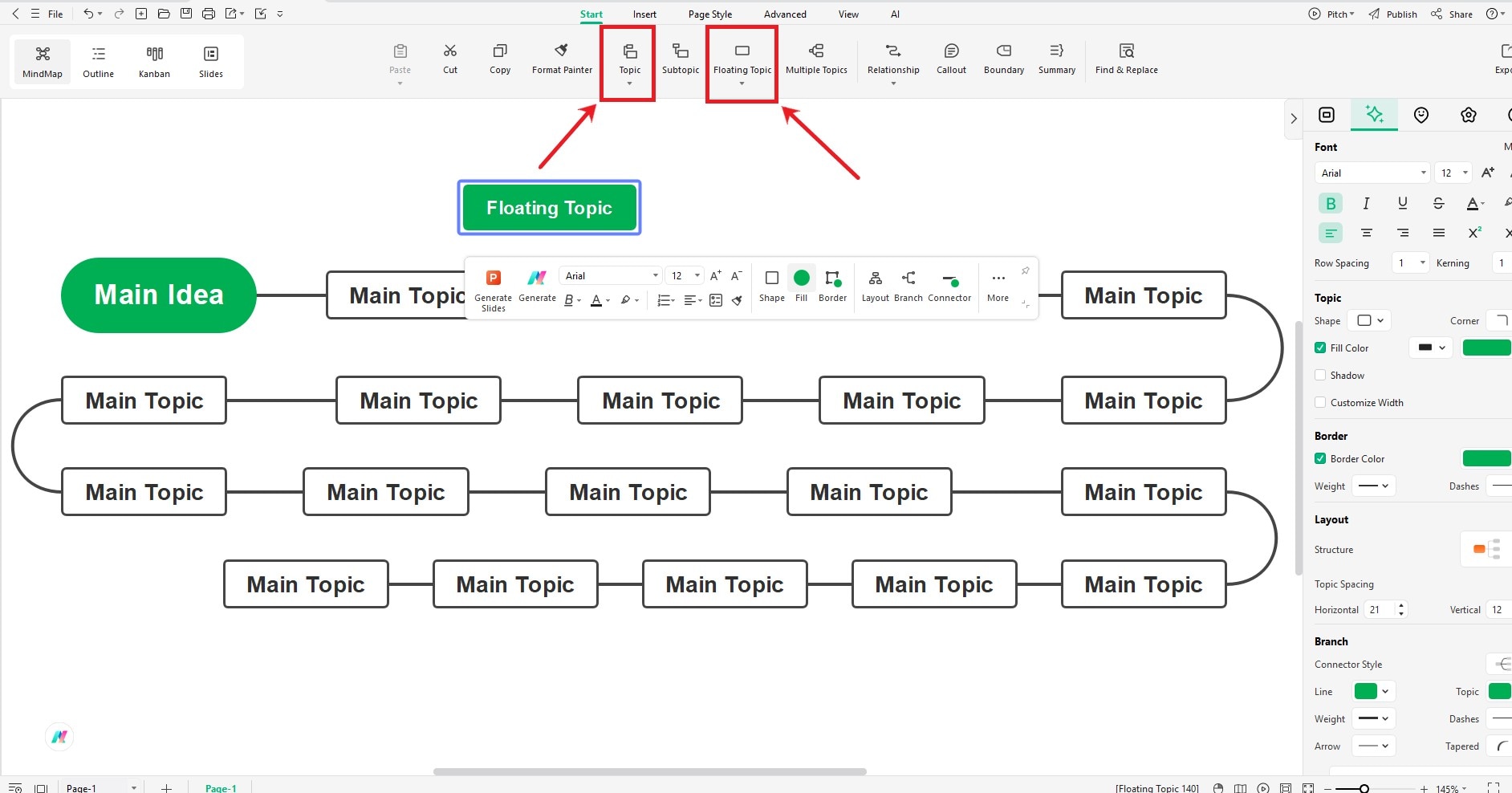
Step 4: Customize Topics
- Select one or multiple topics. Use the floating menu and the right toolbar to customize the timeline.
- Let’s add text to these topics. Double-click any topic and start typing to enter new content.
- Use the floating menu and right toolbar to customize the font style, size, and properties.
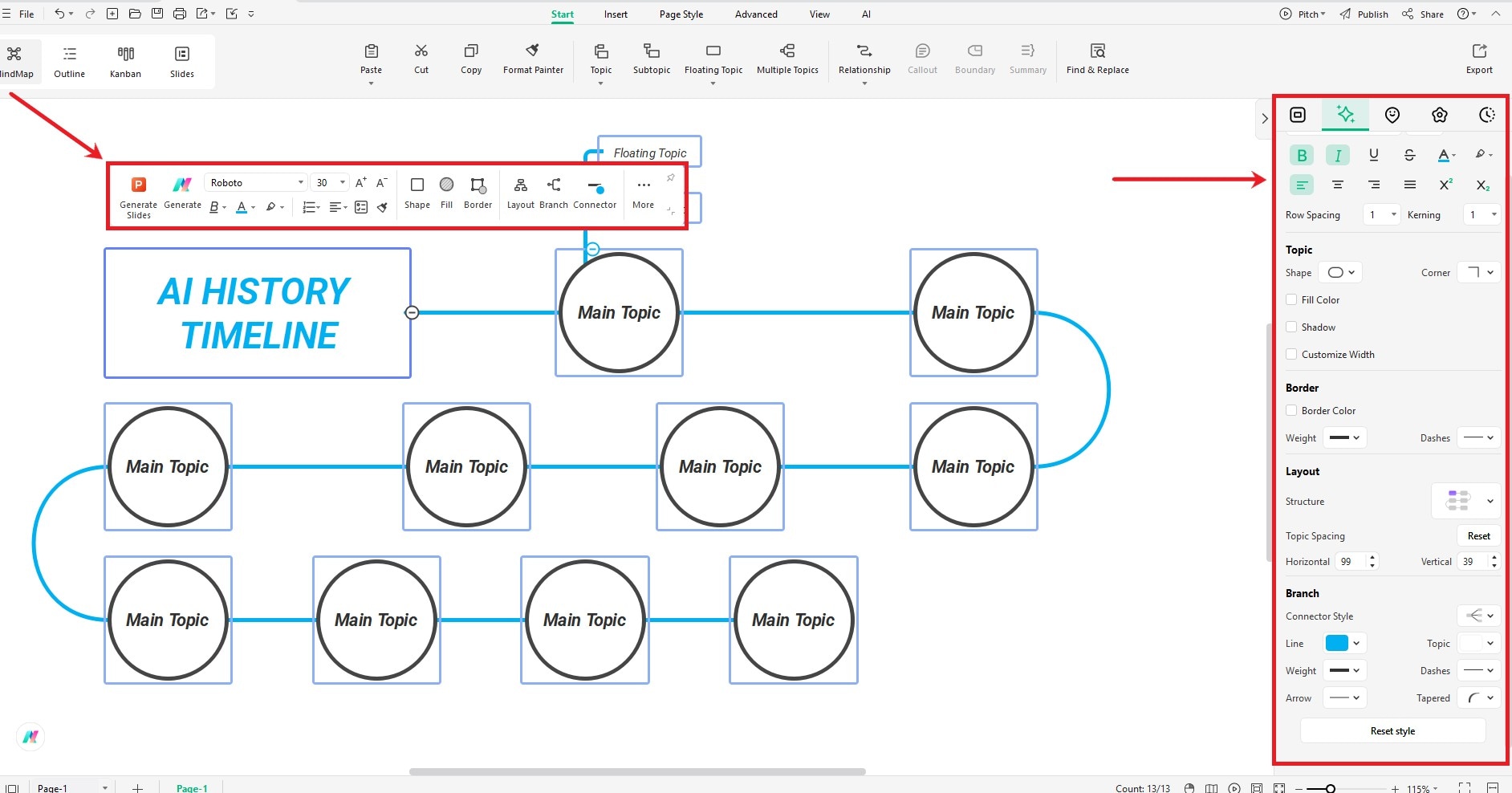
Step 5: Insert Images
- Copy an image and paste it into your EdrawMind canvas.
- Drag the picture and drop it in a topic to place it.
- Use the right toolbar to customize image settings.
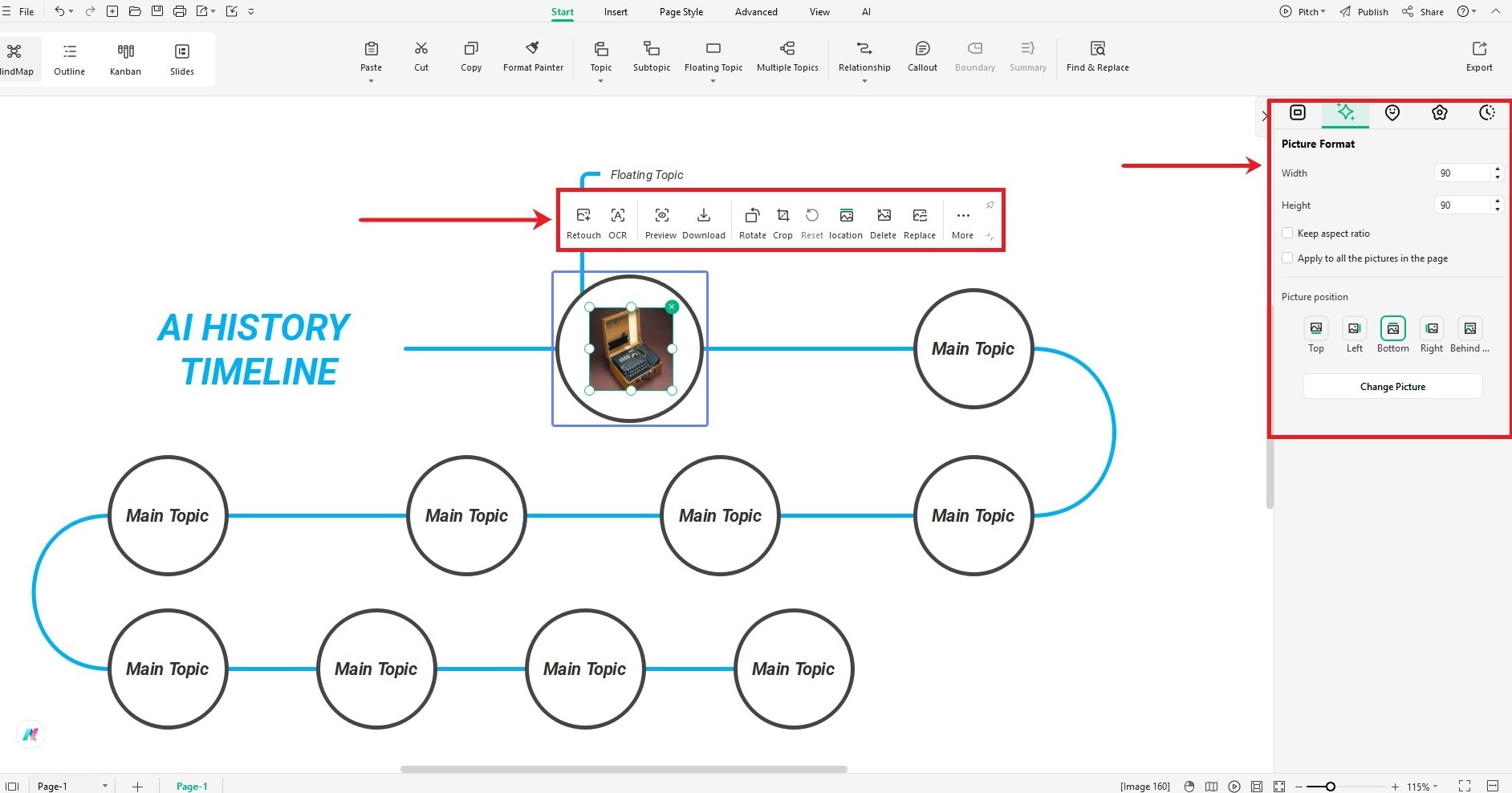
Step 6: Save or Share
- Once everything is finalized, click the File button and select Save to download the timeline.
- Similarly, click Share to send it as an email or get a shareable link.
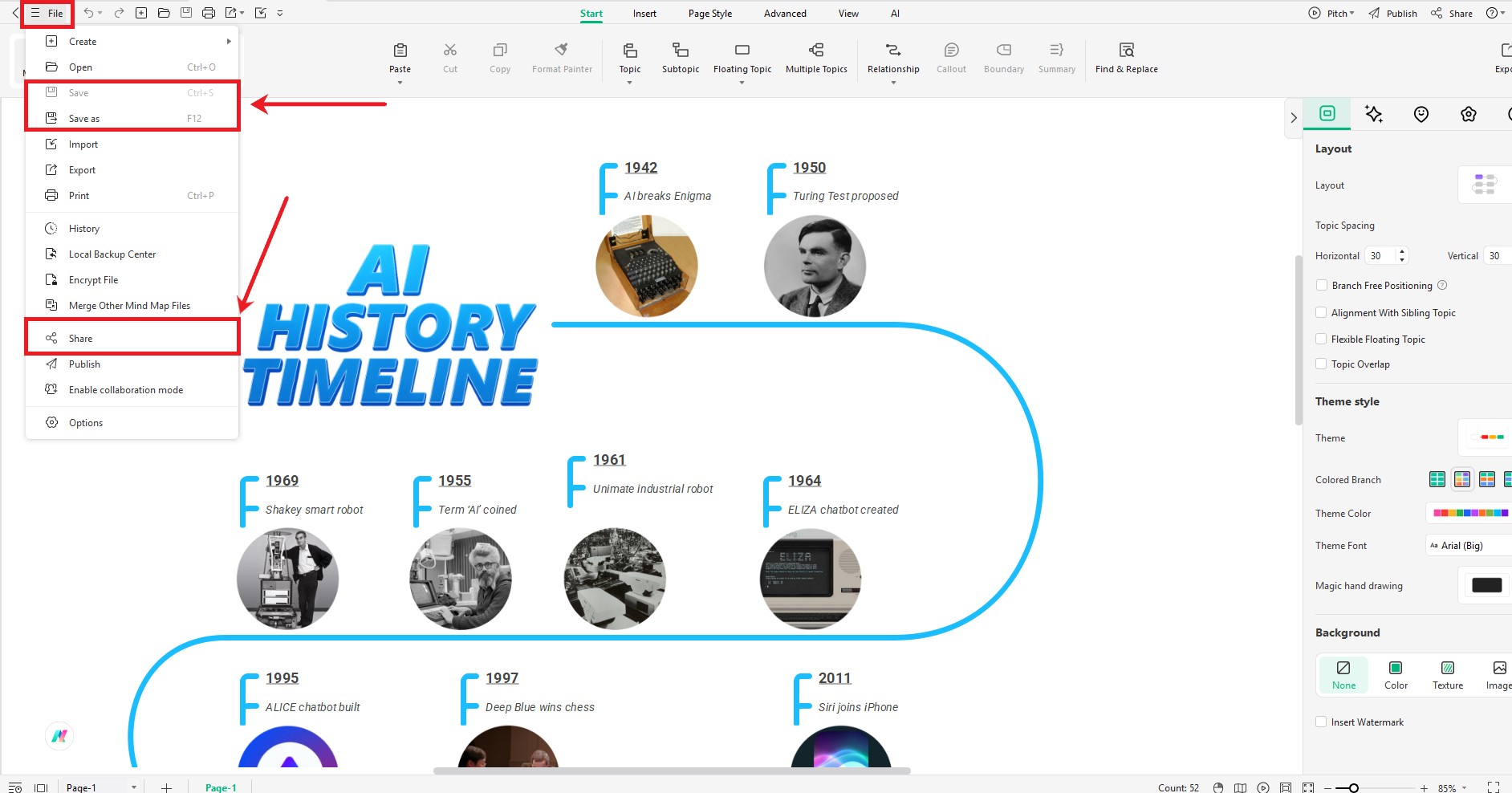
What does the future of AI look like?
One thing's for sure; AI isn't slowing down anytime soon. Like humans, it keeps learning, growing, and evolving. From generating music to diagnosing illnesses, it's evolving at lightning speed. And the best part? It's becoming more accessible for everyone.
We're entering a future where AI works with us, not just for us. Smarter tools. Faster decisions. Bigger ideas.
If you're planning for what's next, you need a clear vision. That's where EdrawMind helps - turning your thoughts into smart visual maps with the power of AI. Ready to map out your future? Give EdrawMind a try today.



